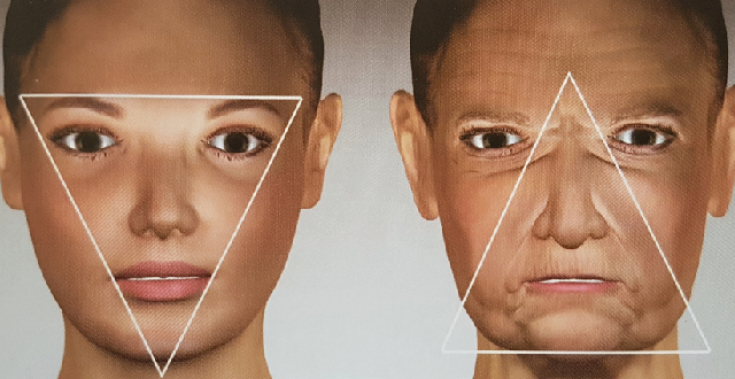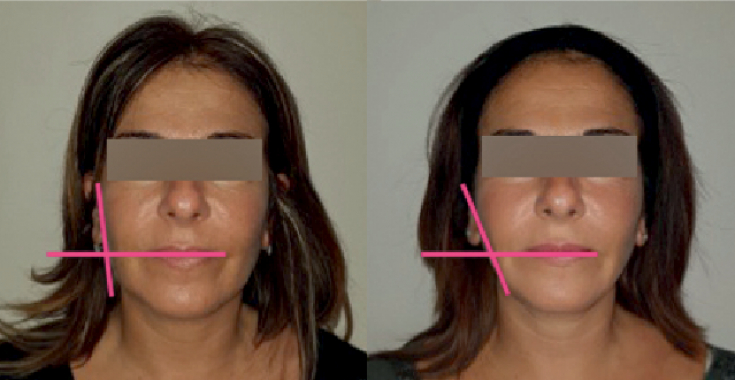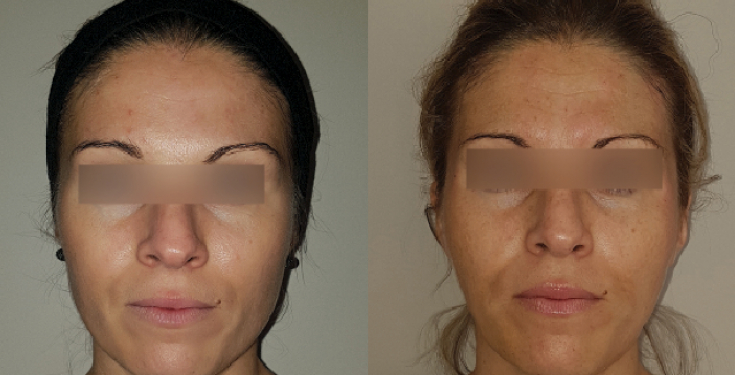If a patient comes to an esthetician complaining of a tired look and signs of aging in the middle third of the face, often a good rejuvenating result can be obtained by correcting the area of the cheekbones and nasolacrimal grooves. However, according to Dr. Pierre Jacques Ackermann (Pierre Jacques Ackermann), in some cases, the desire for overall harmonization of the face – a more winning strategy than the local elimination of aesthetic imperfections. For example, the effect of beautification of the face in the middle third of can be obtained with the help of injections of botulinum toxin into the masticatory muscles. How to do this, read the article estet-portal.com .
- Age-related changes in the middle third of the face
- Aesthetic Masseters: injections of botulinum toxin into masticatory muscles
- Beautification of the middle third of the face by relaxing the masticatory muscles
- Evaluation of results after botulinum toxin injections in masticatory muscles
Age-related changes in the middle third of the face
The appearance of pronounced signs of aging of the middle third of the face is associated with the following changes:
- reduced elasticity and ptosis of the skin;
- weakening of muscle tone and strength;
- vertical displacement of deep and superficial fat pads (most pronounced in the cheekbones);
- resorption of bone structures.
Follow us on Instagram!

Fig. 1: age inversion of the triangle of youth
Age-related changes in tissue structure are most pronounced in the periorbital and central zygomatic areas, including:
- upper central and lower lateral parts of the orbit;
- medial infraorbital and piriform parts of the maxilla;
- premaxillary region.
As a result of skeletonization, which most often manifests itself after 50 years, the lower third sags, the oval of the face is deformed.
For correction, they mainly use:
Aesthetic Masseters: injections of botulinum toxin into masticatory muscles
If the patient complains about the unsatisfactory condition of the middle third of the face, but without volume deficiency (Fig. 2), you can not resort to direct correction of this zone, but correctly emphasize it. This can be done provided that the patient has a sufficiently voluminous zygomatic bone, however, due to the rectangular shape of the face, the middle third is less noticeable.
The effect of harmony and beautification of the face can be obtained by injecting botulinum toxin type A into the masticatory muscles.
It is reasonable to resort to Aesthetic Masseters correction in case of masticatory muscle hypertrophy. This approach provides a good result in patients with rectangular or square faces with insufficient projection of the zygomatic bone.

Fig. 2: a patient with a rectangular face and insufficient projection of the zygomatic bone
Before the procedure it is necessary to carry out:
- complex analysis of the middle and lower thirds of the face;
- correction of the zygomatic zone (if necessary);
- correction of the nasolacrimal trough if necessary);
- correction of nasolabial folds (if necessary).
Beautification of the middle third of the face by relaxing the masticatory muscles
Based on personal experience, the author notes that an important role in facial rejuvenation is played by the correction of its middle third, which is based on the zygomatic bone and the nasolacrimal groove.
However, in many cases, despite the creation of a projection and lateralization of the zygomatic bone, the results of the correction were unsatisfactory for both the patient and the doctor. In addition, volumization led to a visual enlargement of the face.
Also read: Required Reading: Anaphylaxis Emergency Algorithm
The author came to a solution to this problem as a result of the use of botulinum therapy for bruxism and hypertrophy of the masseter muscle.
The inverted triangle of youth is formed when, due to hypertrophy of the masseter muscle, the distance between the mandibular angles exceeds the distance between the zygomatic eminences.
A reduction in masticatory muscle volume of about 30% with botulinum toxin injections can restore harmony between the middle and lower thirds of the face in patients with a rectangular face.

Fig. 3: improvement of the face shape by 10 degrees in the buccal area
Injections of botulinum toxin type A into masticatory muscles reduce their volume by about 30% and allow you to restore the lower third in accordance with modern standards of femininity. Thus, harmony is achieved between the middle and lower thirds of the face rectangular.
Evaluation of results after injections of botulinum toxin into masticatory muscles
While working, the author considered three key criteria:
- Lines:
- between the zygomatic eminence and the mandibular angle there are two vertical lines that are completely or almost parallel;
- The line connecting the ear and the mandibular angle did not provide satisfactory results.
- Bend of zygomatic bone.
- The angle between the vertical connecting the zygomatic eminence and the angle of the mandible and the horizontal crossing the lips (90-95 degrees in the cases below).
The author found that the most accurate assessment of the result of beautification of the middle third after relaxation of the masticatory muscles can be achieved using the angle indicated in paragraph 3. A satisfactory result is achieved when increase the angle by 10 degrees (see Fig. 3 ).
The thickness of the tissues located between the surface of the skin and the masseter muscle remains unchanged after injections of botulinum toxin type A. The drug acts exclusively on the muscle.
Relaxation of the masticatory muscles with botulinum toxin made it possible to visually increase the volume and expression of the middle third of the face, which had previously been "lost" on the rectangular face of patients. This effect is provided by narrowing of the lower third.
The more attractive shape of the now prominent zygomatic eminence was liked by the patients, who were satisfied with the results of the correction (Fig. 4).

Fig. 4: before and after injections of BoNTA into the masticatory muscles
Patients and Methods
As part of the study, the author considers 4 cases from his own clinic for the period from October to December 2017
The group of patients included four women aged 35-50 years who had not previously corrected the zone of masticatory muscles with botulinum toxin injections.
For the purposes of clinical evaluation, the author examined the patients and palpated the masseter muscle at rest and during clenching of the jaws. Thickness measurement m. masseter was performed using magnetic resonance imaging in three dimensions before the procedure and three months after relaxation of the masticatory muscles with injections of botulinum toxin type A.
Procedure description
Each patient was injected with 25 units of botulinum toxin type A into the masticatory muscles on each side of the face.
High degree of patient satisfaction, safety and minimum complications – key benefits of Aesthetic Masseters.
Injections were made at 5 points to the full length of the needle at a 90 degree angle. According to the results of ultrasound examination, in 20% of cases, a longer needle was required for intramuscular injection of botulinum toxin.
The patients were followed up for three months. The main purpose of observation – by magnetic resonance imaging to confirm a decrease in the volume of masticatory muscles. Follow-up examinations were scheduled once a month, and telephone interviews were conducted every two weeks. Patients were photographed during each examination.

Fig 5: injections are made into the most thickened area of the muscle; 5 insertion points located within 1 cm of the border of the circle
Results
According to the results obtained by the author, masticatory muscle volume after injection of botulinum toxin is reduced by approximately 30%. However, the degree of volume reduction varies depending on the patient and side of the face.
Read also: Botox Injections® in different age periods: when and what we correct
In general, the procedure for beautifying the middle third of the face by relaxing the masticatory muscles with botulinum toxin injections can be called effective, satisfactory and safe for patients, since the likelihood of complications after it is minimized.
According to Prime magazine.
More useful information on our YouTube channel:







Add a comment